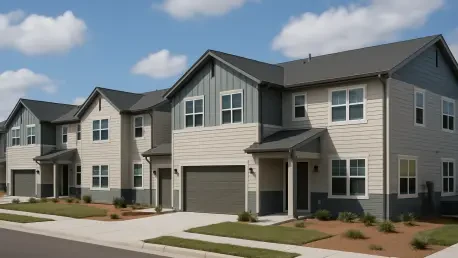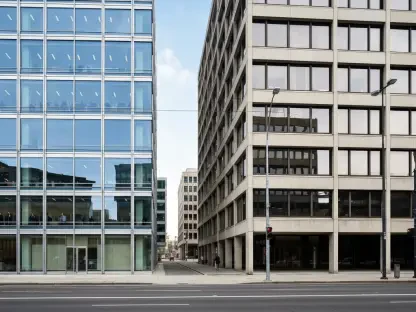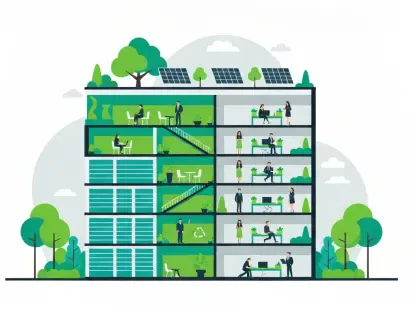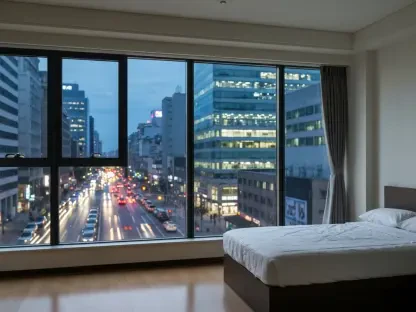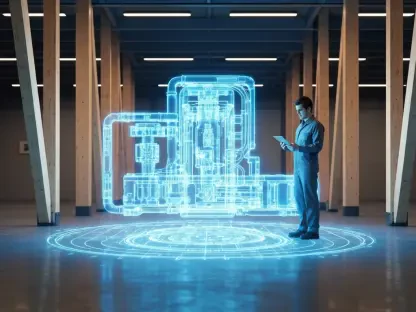What if the daily grind of military service could end in a living space that feels more like a modern apartment than a barracks bunk? At Baker Barracks on Thorney Island, this idea is no longer just a dream but a tangible transformation taking shape. A groundbreaking construction project is redefining what military housing can be, offering soldiers not just a place to rest but an environment that supports their well-being and readiness. This initiative promises to set a new benchmark for army accommodations across the nation.
The significance of this development cannot be overstated. With military personnel often enduring outdated facilities that fail to meet modern standards, the need for upgraded living spaces has become a pressing concern. The project at Baker Barracks, spearheaded by the Defence Infrastructure Organization (DIO) in partnership with Reds10, tackles this issue head-on. It represents more than just new buildings; it’s a commitment to enhancing soldier welfare, integrating sustainability, and ensuring operational efficiency. This story explores how this base is becoming a model for the future of military life.
A New Standard in Military Housing
At the heart of Baker Barracks’ transformation lies a vision to elevate the quality of life for soldiers through innovative design. The construction of three modular accommodation blocks is underway, providing a total of 315 en-suite bedspaces. These are thoughtfully allocated with 242 spaces for Junior Ranks, 47 for Senior Non-Commissioned Officers, and 26 for Junior Officers, ensuring that privacy and comfort are prioritized across all levels of service.
Beyond individual rooms, the project addresses broader lifestyle needs with infrastructure upgrades. Over 400 new car parking spaces are being added, including 20 designated for electric vehicle charging, reflecting a forward-thinking approach to capacity and environmental responsibility. This blend of personal and communal enhancements underscores a shift in how military bases can support their personnel in a holistic manner.
The impact of such changes ripples beyond mere convenience. Improved living conditions are directly tied to morale and operational readiness, allowing soldiers to recharge in spaces that feel like home. Baker Barracks is proving that military housing can match the comforts of civilian life while meeting the unique demands of service, setting a precedent for bases nationwide.
Addressing the Urgency for Modernization
For decades, many military personnel have grappled with living quarters that lag behind contemporary standards, often impacting their physical and mental health. Cramped, outdated facilities can hinder rest and recovery, critical components for maintaining peak performance in demanding roles. The push to modernize army living spaces has gained momentum as a vital step toward supporting the workforce that defends the nation.
The initiative at Baker Barracks emerges as a direct response to these longstanding challenges. Managed by the DIO, this project aligns with a broader mission to overhaul military infrastructure, ensuring that accommodations keep pace with the evolving needs of service members. It’s a clear signal that the well-being of soldiers is no longer an afterthought but a strategic priority.
Moreover, this modernization effort dovetails with environmental goals, integrating sustainable practices into the core of military estate planning. By addressing both human and ecological needs, the project highlights a comprehensive approach to improvement. This dual focus positions Baker Barracks as a leader in redefining what military bases can achieve in terms of quality and responsibility.
Inside the Project: Innovation at Work
A closer look at the Baker Barracks development reveals a meticulously planned endeavor rooted in cutting-edge solutions. The modular accommodation blocks are being built using Modern Methods of Construction (MMC), a technique that prioritizes efficiency and quality. These structures incorporate photovoltaic panels and air source heat pumps, alongside a SMART energy management system designed to minimize energy waste and reduce carbon footprints.
Infrastructure enhancements extend beyond housing to ensure the base meets future demands. Plans under the Army’s Defence Estate Optimization (DEO) Programme include expansions for the 7 Air Defence Group, such as mess extensions, additional office and storage areas, and secure facilities. Construction for these upgrades is slated to begin in Fall 2026, reflecting a long-term commitment to operational support and scalability.
Every aspect of this project balances immediate needs with strategic foresight. From eco-friendly technologies to rank-specific living arrangements, the design ensures that soldiers have access to spaces that enhance their daily lives while preparing the base for evolving military requirements. This thoughtful integration of innovation makes Baker Barracks a potential blueprint for other installations seeking transformation.
Perspectives from the Field
The enthusiasm for this project resonates strongly among those leading and executing it. Major General Richard Clements has emphasized the soldier-centric approach, stating, “These accommodations reflect direct input from personnel, ensuring high-quality environments that meet both operational demands and budget constraints.” His words highlight the deliberate effort to tailor spaces to real needs rather than generic standards.
Warren Webster of the DIO shares a similar optimism about the project’s trajectory. “Seeing this initiative come to life is incredibly rewarding, and the positive impact on soldier comfort will be transformative,” he noted. This perspective reinforces the anticipation surrounding the completion of these new living spaces and their role in enhancing base life.
Phil Cook from Reds10, the construction partner, sheds light on the technical advancements driving the project. “Our industrialized construction methods enable us to deliver top-tier living spaces swiftly and sustainably,” he explained. Together, these voices from military leadership and industry experts paint a picture of collaboration and innovation, grounding the project’s ambition in practical outcomes.
Scaling the Success: A Model for Change
The achievements at Baker Barracks offer valuable insights for modernizing military housing on a wider scale. A key takeaway is the importance of incorporating soldier feedback into design processes, ensuring that spaces like en-suite rooms address actual preferences over outdated communal setups. This user-focused approach can significantly elevate satisfaction and functionality across bases.
Another critical lesson lies in adopting Modern Methods of Construction to streamline building timelines without compromising on standards. Coupling this with sustainable features—such as solar energy systems and electric vehicle charging points—aligns military infrastructure with national carbon reduction targets. Such strategies demonstrate how efficiency and environmental stewardship can coexist in large-scale projects.
Finally, planning for future growth remains essential, as evidenced by the DEO Programme’s phased upgrades. Bases elsewhere can replicate this by embedding adaptable infrastructure from the outset, preparing for changing needs over time. These principles provide a roadmap for military installations aiming to enhance living conditions, ensuring that soldier welfare and operational effectiveness remain intertwined priorities.
Reflecting on a Milestone
Looking back, the transformation at Baker Barracks stood as a pivotal moment in the evolution of military housing. It showcased how strategic investments could reshape the daily experiences of soldiers, offering them environments that nurtured both rest and readiness. The blend of modern design, sustainability, and operational foresight marked a departure from the past, proving that change was not only possible but essential.
As other bases took note, the lessons from this project began to inspire broader action. Military leaders and planners were encouraged to prioritize similar upgrades, focusing on soldier input and eco-friendly innovations to drive improvements. The challenge ahead was to sustain this momentum, ensuring that every service member could access living spaces worthy of their sacrifice.
The path forward demanded collaboration across sectors, from government bodies to construction experts, to replicate and refine this model. By investing in scalable solutions and maintaining a commitment to welfare, the military could build a future where quality housing became the standard, not the exception. This vision, sparked at Baker Barracks, held the promise of lasting impact for generations of soldiers to come.
